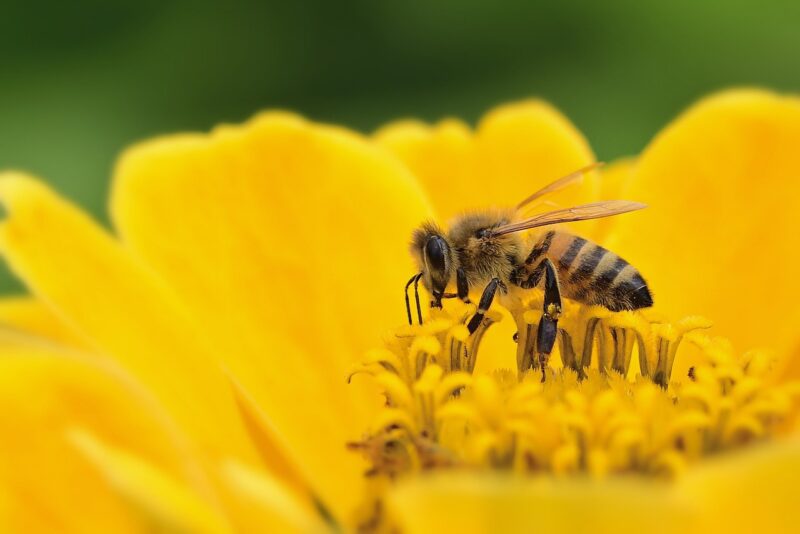The Role of Bees in the Ecosystem and Why Their Decline Is So Alarming
November 16, 2024

Bees are more than just buzzing insects; they are vital contributors to our ecosystem and food production systems. They pollinate plants, which is essential for producing fruits, vegetables, and nuts, thus playing an irreplaceable role in supporting biodiversity and the human food supply. The alarming decline in bee populations worldwide poses serious threats not only to agriculture but to the health of the planet.
1. The Importance of Bees in Pollination
Pollination is a hallmark of plant reproduction. It is the process through which pollen from the male parts of a flower is transferred to the female parts, enabling fertilization and the production of seeds. Bees are among the most effective pollinators due to their nature and behavior
– They are attracted to flowers’ colors and scents.
– While collecting nectar for food, they inadvertently transfer pollen.
Studies estimate that bees are responsible for pollinating almost 75% of flowering plants and approximately 35% of the crops that supply food for humans. Flowers require pollination not only to produce seeds but also to thrive and survive, as the process promotes genetic diversity.
2. Economic Contribution of Bees
The economic implications tied to bees and their pollination activities are staggering. A recent assessment by the Food and Agriculture Organization (FAO) suggests that annual global crop production relying on bee pollination is valued at over $200 billion. Key crops that depend on bees include:
- Fruits: Apples, pears, berries, peaches, and more.
- Vegetables: Cucumbers, pumpkins, zucchini, and peppers.
- Nuts: Almonds rely almost exclusively on pollen from bees to produce fruit.
Bees not only contribute to crop yields but also increase the quality of produce. Furthermore, the decline in bee populations threatens these food sources, potentially leading to increased prices and food scarcity.
3. The Decline of Bee Populations
In recent years, reports of declining bee populations have garnered increasing attention. This decline, often referred to as Colony Collapse Disorder (CCD), involves the sudden loss of a bee colony’s worker bees, leaving behind the queen and brood. Several factors contribute to this phenomenon:
- Pesticides: Chemicals used in agriculture can be harmful to bees, impairing their ability to navigate and reproduce.
- Habitat Loss: Urbanization and monoculture farming have drastically reduced the natural habitats where bees thrive, leading to food scarcity.
- Climate Change: Changing weather patterns affect the timing of flowering plants and can disrupt the synchronicity between bees’ lifecycle and the plants they pollinate.
- Diseases and Parasites: Varroa mites and other pests weaken bee colonies and spread diseases, creating a vicious cycle of decline.
The alarming statistics indicate that beekeepers have lost nearly 30% of bee colonies annually in various regions, which jeopardizes both biodiversity and food systems.
4. The Ecosystem Beyond Agriculture
The significance of bees extends beyond agricultural productivity; they play a critical role in maintaining healthy ecosystems. By contributing to the pollination of wild plants, bees facilitate the reproduction and growth of local flora, impacting entire ecosystems. A decline in bee populations leads to:
- Loss of Biodiversity: Many plants rely on bees for pollination, and without them, these plants may face extinction, leading to diminished habitats for other species.
- Impact on Other Wildlife: Animals that feed on plants, fruits, and nuts will experience food shortages, affecting their survival and population numbers.
- Disruption of Ecosystems: Plant diversity is crucial for ecosystem functions like soil health, water retention, and climate regulation, all of which are at risk with decreasing bee populations.
As a keystone species, bees are crucial for ecological balance, and their decline signifies broader environmental issues.
5. Steps to Protect Our Bees
Addressing the decline of bee populations requires a multifaceted approach. Here are actionable steps individuals, communities, and governments can take:
- Reduce Pesticide Use: Implement integrated pest management (IPM) practices and opt for organic farming methods that protect bees while managing crops.
- Create Pollinator Gardens: Planting a diverse range of native flowers provides food sources and habitats for bees and other pollinators.
- Support Local Beekeepers: Buying honey and other bee-related products from local beekeepers supports sustainable beekeeping and encourages pollinator preservation.
- Advocate for Policies: Urging governmental entities to enact regulations that protect bee habitats and mitigate pesticide use is paramount for conservation efforts.
- Educate Communities: Engaging with the community about the importance of bees fosters awareness and encourages public participation in conservation strategies.
Bees face numerous challenges, but with collective efforts, we can contribute to creating a world where they can thrive.
Conclusion
Bees are crucial components of our ecosystem, contributing significantly to biodiversity and food production. Their alarming decline is a stark reminder of the fragility of our ecosystem and highlights our responsibility to take action. It is our collective duty to advocate for bee conservation and promote practices that ensure their survival. By understanding their role and impact, we can contribute to a brighter and more sustainable future—one in which bees continue to fly freely, pollinating the plants that nourish our planet and sustain our lives.







